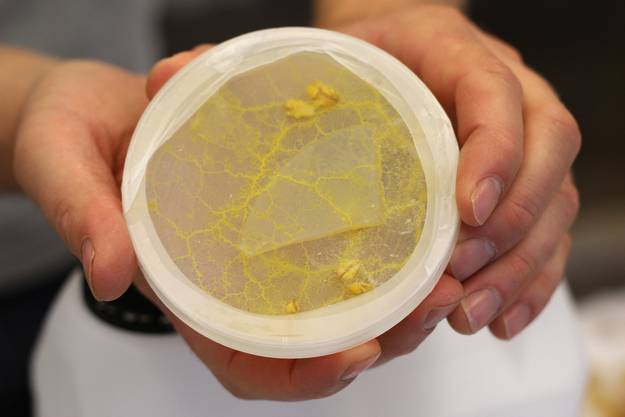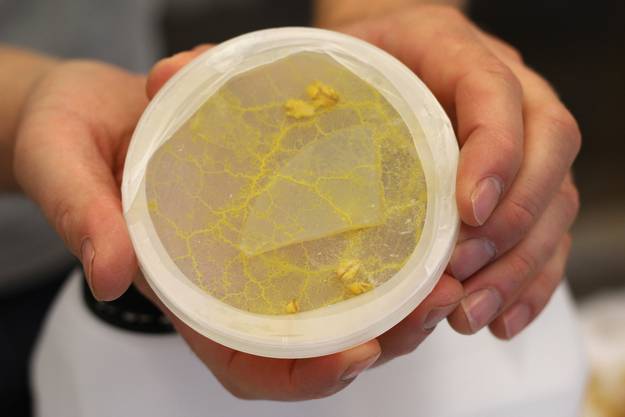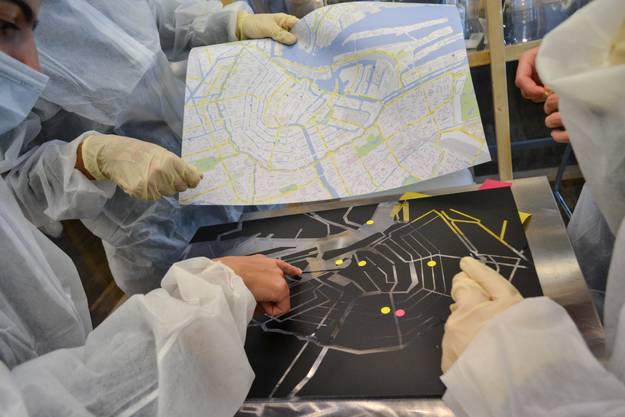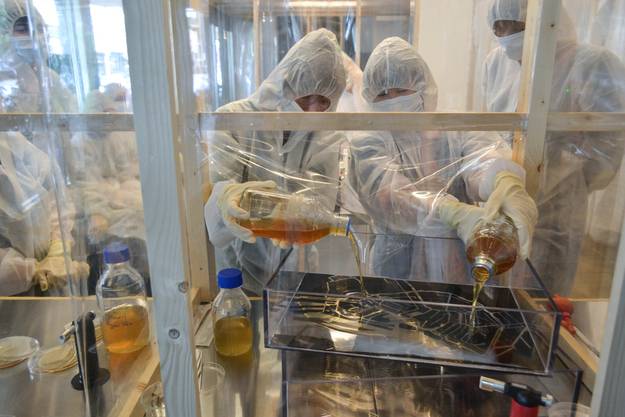

You probably know that theres an app for finding the quickest route from point A to point B in ANY given city. But did you know theres also a single celled organism that will do the same job? Mediamatic Gallery in the Netherlands have enlisted the help of slime mold to find the quickest route to their relocated gallery space.
The path of least resistance sums up slime mold nicely: it's a unicellular organism distinct from other fungi which displays primitive intelligence: experiments regularly demonstrate that slime mold is capable of finding the quickest route between two sources of food. One notable example showed that slime mold could do efficient city planning - the exact routes of the Tokyo subway system were mapped to the tee by the organism.
Mediamatic decided to remap the cultural pathways of Amsterdam by imitating the above experiment. They redrew Amsterdam on a scaled map of filter paper and agar, the nutrient which mold can grow in. By ensuring that the streets were agar and the building's outlined in paper the slime mold was able to navigate its environment through comparable routes that you or I would take through the city. By placing oat flakes on each of the galleries and cafes of interest the slime mold gradually mapped the most efficient way to each.
This project is interesting as it enlists the problem solving powers of slime mold and brings primitive biocomputation into the mix. We reckon its a genuinely refreshing way to find new paths through our increasingly digitally navigable cities.




